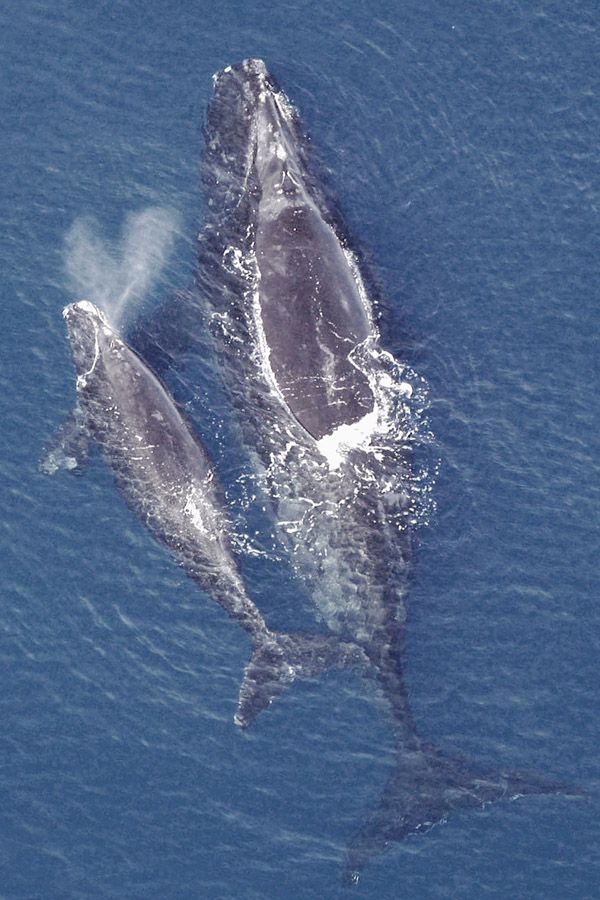
Our Birth and Infancy
We whales have the same partner throughout our lifetime. Our infants are born and bred in the water. A mature female gives birth to one offspring about every two years. (...) Seals go on the land to give birth to their young, but we do it all in the water. Just imagine what it would be like if our babies were born head-first: if the birth took any time at all, they would be forced to take their first breath while their head was still under water, and they would drown. But our Creator had thought this all out, and He arranged things for us differently than for any other mammal: All whales are born in the breech position, i.e. the baby whale appears tail-first. In this way, the infant remains connected to its life support system (its mother’s umbilical cord) for as long as possible. There aren’t any sheltering caves or other places of refuge for the new-born to be hidden in. So this security is provided by the helpful care of the other members of the group, as well as by the loving attention of the mother. Even as babies, we can’t be overlooked. The infant blue whale is 8 metres long at birth, and weighs 8 tons. That’s 2000 kg more
than an adult elephant weighs. And to come up to its length at birth, at least 3 elephants would have to be lined up in a row. Other whale babies aren’t that much smaller than the blue whale:
- Greenland whale: 6 metres, 6 tons.
- Northern right whale: 5 metres, 5 tons.
- Humpback whale: 4.5 metres, 2.5 tons.
- Grey whale: 4.5 metres, 1.5 tons.
Nursing under water has its problems, too. So the Creator provided wonderful equipment for us. The mother squirts her milk directly from her teat into the mouth of her infant. This takes place with such pressure that it would cause a milk fountain on the surface two metres high. The breast lies in a pocketshaped fold, so that it doesn’t disturb her streamlining. The whale baby has to grow fast, in order to be strong enough for the rapidly approaching return migration into the polar waters. The milk it drinks is the most nutritious milk that exists; it has 42 % butter-fat content, and 12 % protein (compared with human milk: 4.4% butter-fat, and 1% protein). It is very thick and creamy. This calorie bomb, which is 100 times as nutritious as an adult human would require, causes the baby whale to grow at a breath-taking rate. While a human infant takes 180 days to double its birth weight, a whale baby takes a lot less time. During the 7 months before it is weaned, a baby blue whale drinks 90 kg of milk daily. Every 24 hours it grows from three to four centimetres, and increases in weight by about 80 kg. That makes 3.3 kg per hour! Some 18 to 19 tons of this extremely dense milk cause the baby whale to grow 17 tons during the entire time it is nursing. Isn’t that a sensational degree of efficiency?
continued: The Blue Whale – Giant of the Animal Kingdom
* quotes from the book "If Animals Could Talk"









